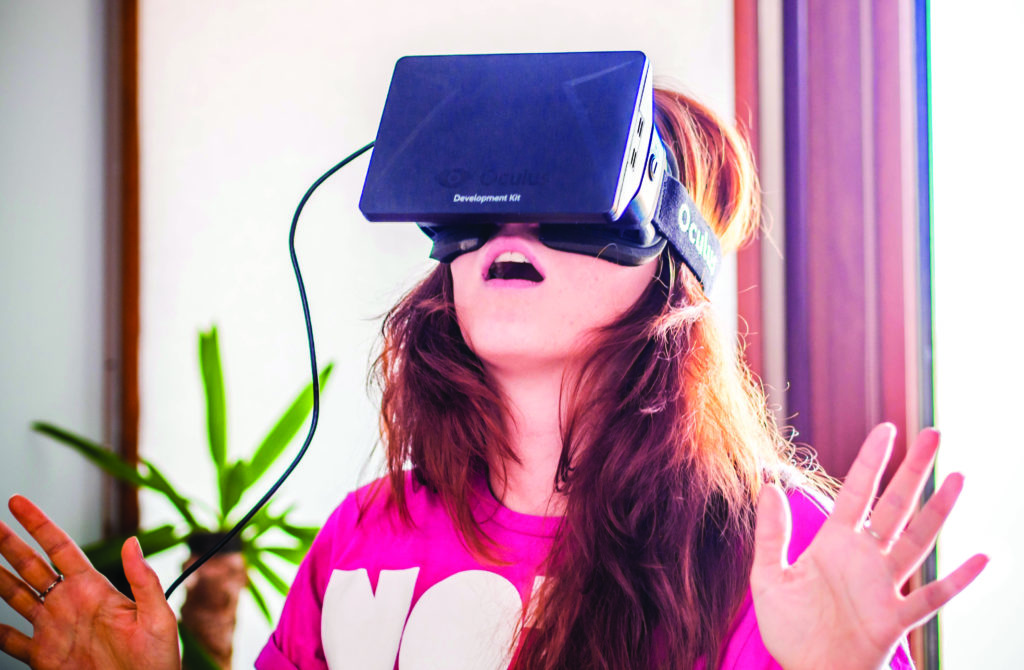Imagine strapping on a headset and being able to ‘test drive’ a car you wish to purchase; or getting a 360-degree tour of potential holiday destinations; how about a quick look inside an apartment you want to book for a trip? Virtual Reality (VR) has made all these scenarios possible, radically changing the way we interact with the world.
VR gained a lot of attention when Facebook took a gamble and purchased a startup called Oculus VR back in 2014 for a cool $2 billion. Fast forward to 2016 and the company has two products ready for the public; the pricey Oculus Rift at $600, and the Samsung Gear VR, offered free with all pre-orders and purchases of the new Galaxy S7 and S7 Edge handsets globally until March 20 this year.
And consumers can’t wait. Simon de la Rouviere, a 26-year-old based in Cape Town who owns a Gear VR headset, says he’s mostly a fan of VR content that pushes the boundaries of what we aren’t able to experience in real life.
“Games like Land’s End, where you guide blocks in an alternate meditative space, was grand. I really enjoyed I Am You, a short film where one assumes the mind of another person. I’m looking forward to some great productivity apps though. I think there is an untapped market currently for it, rather than entertainment.”
Meanwhile, Naeema Surtee, a 40-year-old mother of four says the Gear VR is entertaining for both kids and adults alike.

OLYMPUS DIGITAL CAMERA
“When the headset is strapped on, you lose complete sense of reality; it is extremely life-like and feels like you’ve stepped into another country when using the virtual cities app.” You can stand in the center of a busy street in a major city, turn a full 360-degrees and view everything around you, she says. “My kids really enjoyed this.”
Arthur Goldstuck, founder and analyst at World Wide Worx in South Africa, says there are quite a few manufacturers moving in the right direction with VR headsets, such as Gear VR with its Oculus integration, but it’s difficult to say if any particular brand has gotten it “right” thus far.
Goldstuck notes LG has taken an interesting approach in terms of comfort, with its LG 360 VR headset, unveiled in Barcelona at the Mobile World Congress in February. The headset does not require a smartphone to be slotted into it like like Gear VR and other headsets, but instead, allows the user to run a cable to the accompanying smartphone.
“Virtual reality is going to become a part of a mix of the entertainment world, and the real power of VR is that it creates immersion in entertainment,” says Goldstuck.
“Traditionally, when watching Cirque du Soleil, spectators are outside the action and view it from the perspective of the cameras present. But the moment you are inside the action, it becomes immersive, with the dancing and acrobatics taking place around you, rather than in front of you.”
Goldstuck adds: “VR is not only coming at you, but you can come at it as well. You can explore at your leisure, in a way you want to view it and in terms of what you want to focus on, with a complete 360-degree view allowing you to look around you.”
South African consumers can pick up various VR headsets, one being the entry-level Android and iOS compatible Google Cardboard for about R120 ($7) at iToys.co.za; the mid-range Homido (iPhone and Android) VR headset for under R1,300 ($84) at the local Orange Store online; or get the more expensive Gear VR and LG 360 VR from various retailers across the country.
One particular device, the HTC Vive, aimed at the gaming community, sold out within 10 minutes when it opened for pre-orders in February. The headset combines both realities by letting you receive and respond to incoming calls and texts directly, is bundled with two wireless controllers with haptic feedback, and has a front-facing camera, which allows the blending of physical elements into a virtual world. The HTC Vive is regarded as having the best VR experience you can currently get, but there’s no confirmation when it will come to the African market.
Deep VR, a South African company specializing in creating VR content for brands since early 2015, thinks VR video is going to become a mainstream form of content, but at the same time says VR headsets won’t become a household device anytime soon, even though they’d love for that to happen.
Ulrico Grech-Cumbo, CEO at Deep VR, says they specialize in cinematic virtual reality experiences but not gaming.
“We’ve done content for GoPro, a variety of different footage from nature to music; for Standard Bank we did a live jazz club experience; and for African Leadership University, it was a ‘week in the life of a student’ at their Mauritius campus, a tool being used to recruit future enrolments.”

But before you go out and purchase a VR headset, Goldstuck emphasizes you need to try it before you buy it, and not just for a minute, as users should be aware of potential issues.
“You need to immerse yourself for a while to make sure you can cope with VR as there are cases of people who suffer from vertigo, dizziness and motion sickness when making use of it.”
Should you go out and purchase a VR headset this year? “If budget is an issue, then wait at least a year to see what emerges over the coming months, not just in terms of the hardware itself but also the content available for it.
“There are categories of people for whom it would make sense right now, for example if you are an enthusiast. Specific cases will guide people to adopt it sooner rather than later. For the rest, unless you have money to burn, hold off on any purchasing decision,” concludes Goldstuck.
